I'm following Phillip Compeau's online biology+math course, and it starts out with reaction-diffusion systems. I've played with them several times before, most recently in 2019, but with this course it finally "clicked" how they work. I have this experience often — I have to play with something before I can understand it.
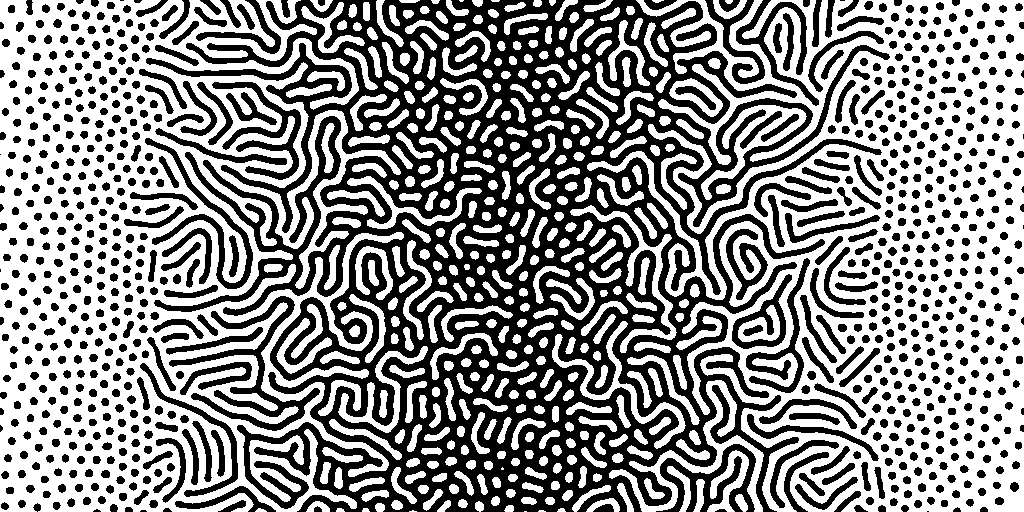
What helped with this course is that it started with random walks (which I understood) and linked them to predator-prey (which I mostly understood) and connected them to reaction-diffusion (which I didn't understand). I had never realized these were connected!
What also helped with this course is that I went through it three times. In the first week I quickly skimmed to get an overview, and I went through my notes from previous times I've studied these topics. In the second week I read through carefully, making notes and following the exercises to write simulations. My notes are here. I skipped one of the simulations because it seemed like a lot of work and I didn't think I'd learn a lot from it. In the third week I put my knowledge to the test by creating some art projects, which you can see on my art page. The art projects made me consider some things I hadn't thought of before, so in the fourth week I tried exploring those, although I didn't make a lot of progress.
I've been time boxing these projects: I give myself one week to work on them, and then at the end of the week I have to explicitly decide to do more on the same project or to move on to the next one. After three weeks on this I decided I should move on to the next project, which will be to learn gene transcription networks from the same book.
This project was fun and I learned a lot.
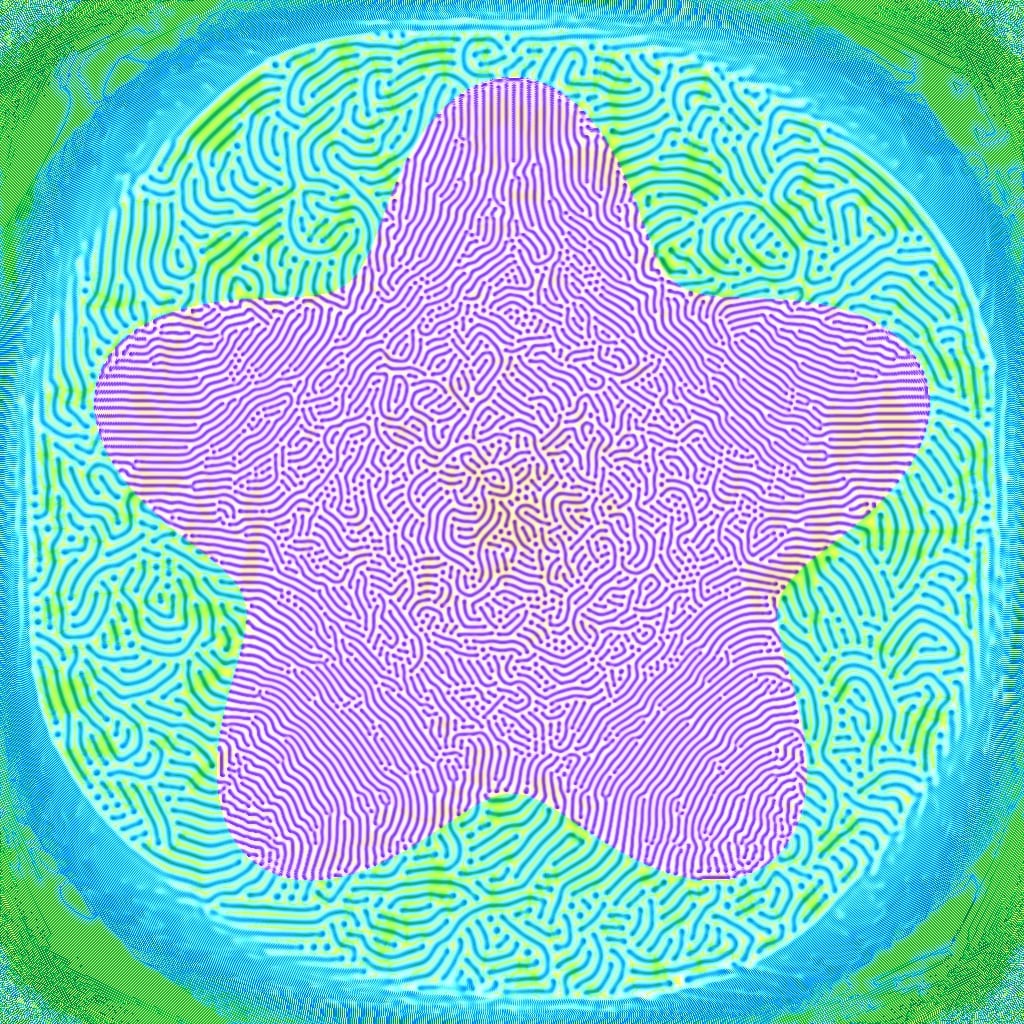
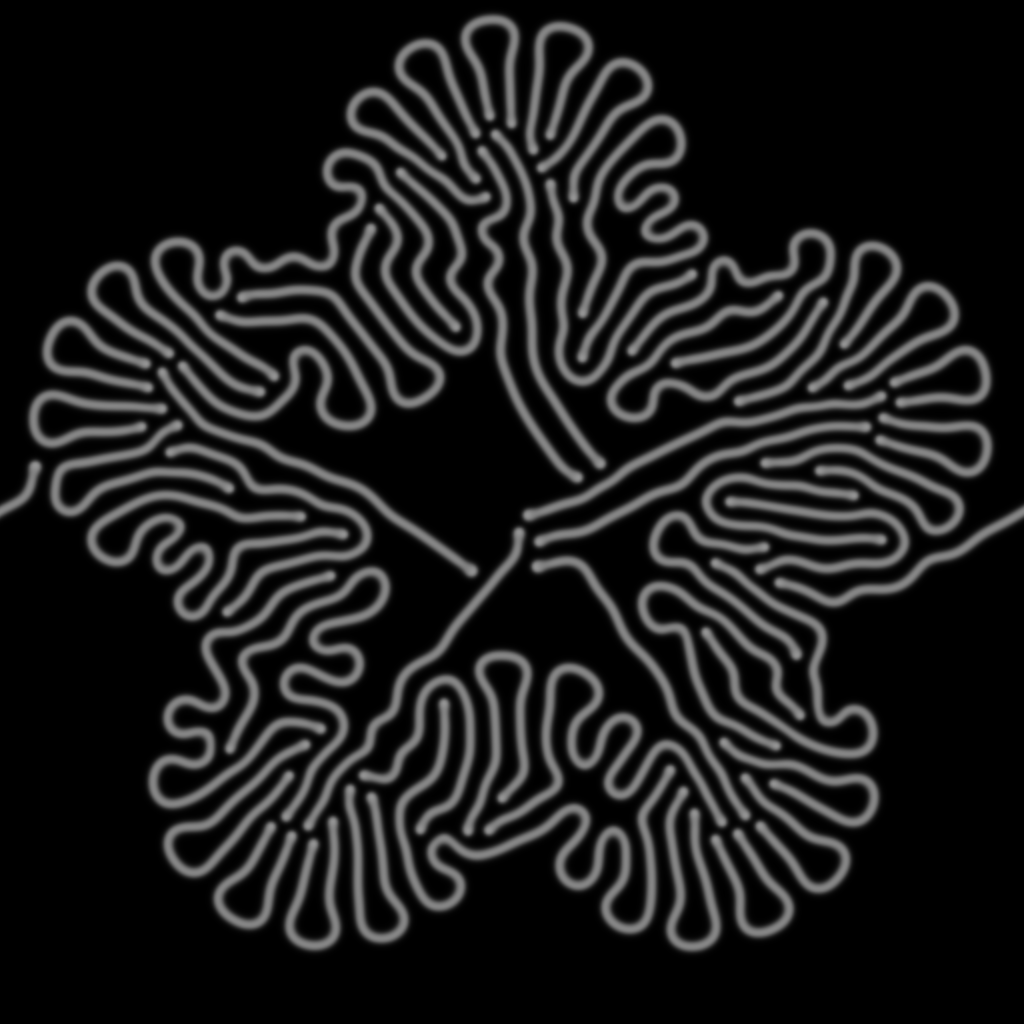
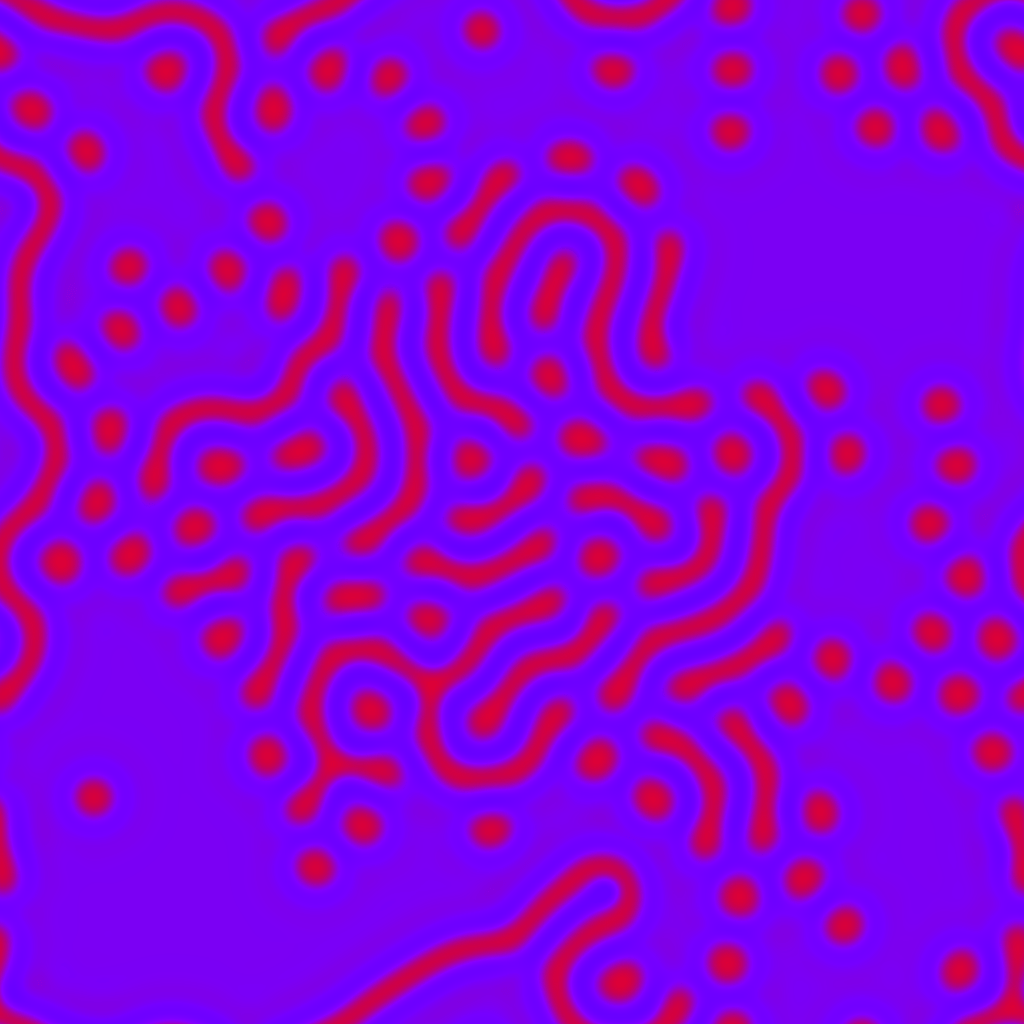
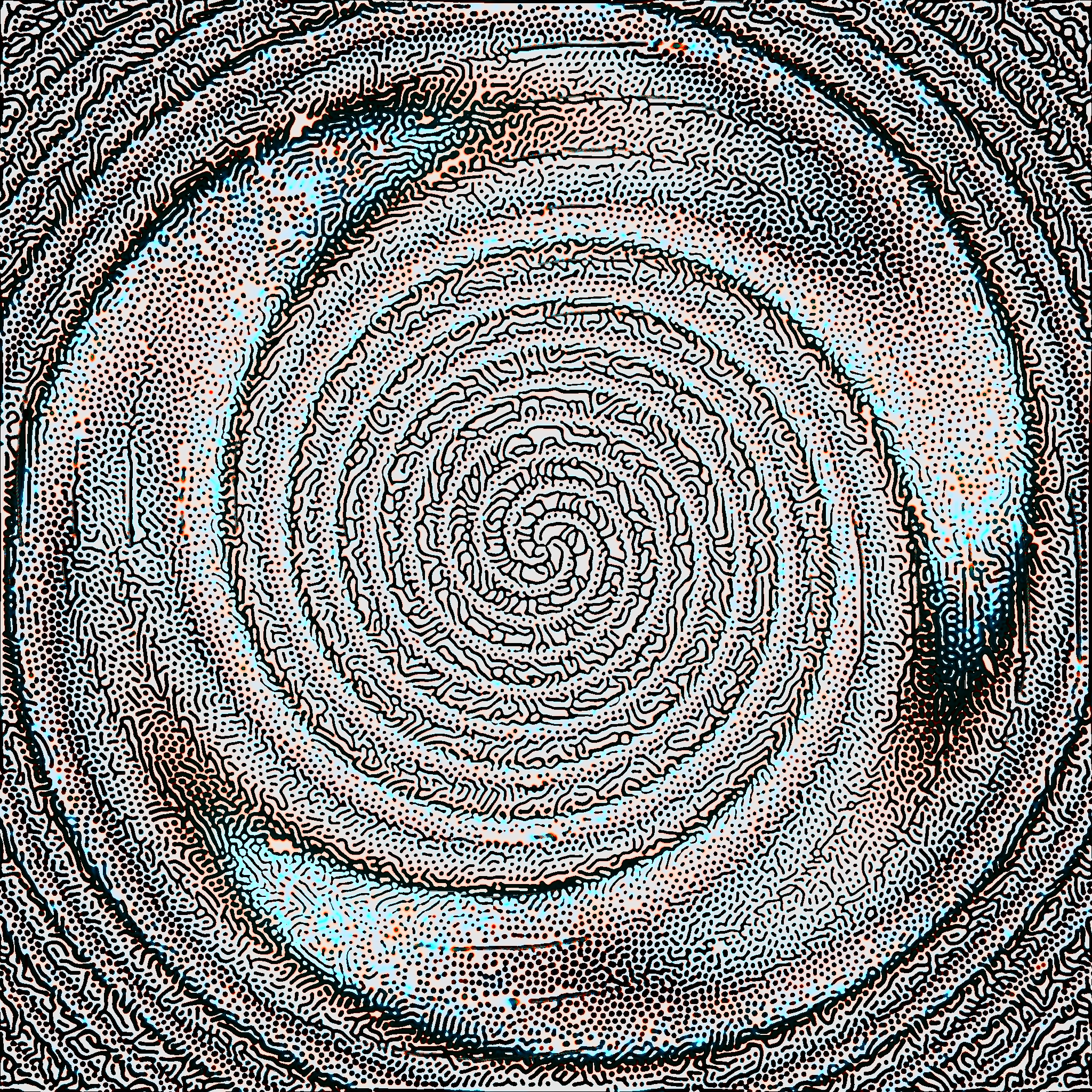
Your art page is amazing! What you've done in the blog post and there makes me want to learn about reaction diffusion.
Agree, the art pages are fascinating!
Thanks! It was a *lot* of fun to play with. In the old days, computing on the cpu, it took too long to see results so I didn't pursue it. But now that we can calculate this with shaders, I can see the results update in real time as I change parameters, and that made me want to revisit this topic.
Those are some wonderfully organic looking space filling curves. I especially like the second star with it's crinkled perimeter :D
You've given me a keen desire to investigate reaction diffusion and explore the source code, cheers!
Hi! I am also aware and have dabbled with Philip’s course. I’m most fascinated with the transcriptional factor network modeling. Have you begun that work yet?
Post a Comment